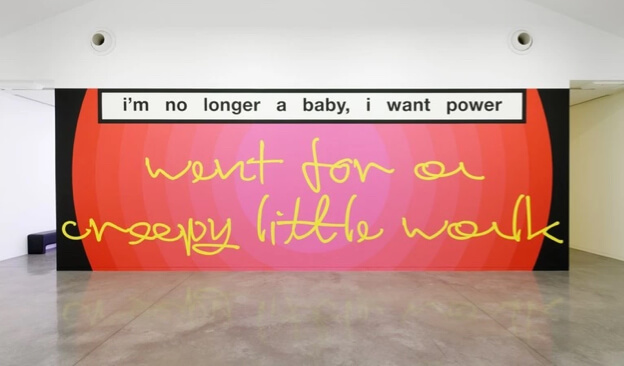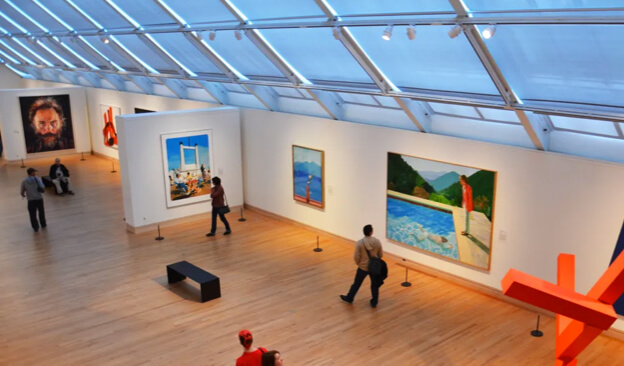
Who finances art?
Art has the power to captivate, inspire, and challenge social norms – it shapes cultures and history, serving as a vibrant reflection of humanity. From the Impressionists to Pop Art, the interpretations of art are limitless. And, behind every masterpiece lies a financial foundation that enables artists to bring their visions to life. Ranging from individuals, organizations, and governments, Artsper has uncovered the key players to answer the question of who finances art?
1. Government funding
Government funding for the arts is a crucial pillar in supporting and nurturing artistic endeavors. Numerous governments worldwide recognize the significance of the arts and allocate funds to sustain a vibrant artistic landscape. For instance, the National Endowment for the Arts (NEA) in the United States is a federal agency that provides grants to artists and organizations across the country. These funds allow your favorite museums and galleries to preserve and expand their collections, curate engaging exhibitions and offer interactive programs to the general public.
In Europe, countries such as the United Kingdom, Germany, and France have also established robust systems of government funding to finance art. The Arts Council England and the Centre national des arts plastiques (Cnap) in France are two examples. These institutions distribute public funds to artists and arts organizations through their extensive art initiatives. Grants and subsidies can serve as a crucial lifeline for artists. They enable them to partake in artistic residencies and explore their creative vision without financial restraints. Larger institutions around the world also benefit from government support. This was particularly prevalent during the Covid-19 pandemic when typical streams of avenue such as visitor ticket sales were curtailed.

2. Individual philanthropy
Art enthusiasts and wealthy individuals with a passion for the arts also contribute to the financial backing of artistic endeavors. These patrons of the arts have the ability to directly support artists, fund exhibitions, and promote cultural institutions. This can be achieved through personal donations, endowments, or by establishing their own foundations.
The Metropolitan Museum of Art in New York received its largest ever cash donation in 2021. The gift of $125 million was donated by Oscar Tang and Agnes Hsu-Tang, according to NPR. In return for their substantial contribution, the Museum’s new Modern wing will be named after the couple. Art philanthropists often receive recognition for their generous contributions. This can take the form of a dedicated wing in an art museum or gallery or a special artwork commissioned in their honor.

Occasionally art philanthropy can be accompanied by controversy and complexities. This was the case with the Sackler family. Once synonymous with art patronage, the Sackler name could be found in all the biggest art galleries and museums around the world including the Metropolitan Museum of Art, London’s National Gallery and the Louvre. However, the revelation of the Sackler’s sordid connection to the opioid epidemic in the United States has triggered the intricate and complex process of removing their name from global institutions and returning the family’s donations.
3. Corporate sponsorships
Corporate sponsorships are the third entity which finances art. Many companies recognise the value in art and the ability for artistic collaborations to enhance their global brand image, leading to strategic partnerships. Luxury fashion brand Louis Vuitton, for instance, has established partnerships with contemporary artists, commissioning unique joint ventures and art exhibitions. In 2017, Louis Vuitton worked with American artists Jeff Koons to create the “Masters” collection. The collection featured iconic artworks from famous artists including Van Gogh and Monet. Any payment Koons received for the collaboration helps to finance further artistic endeavors and the estates of the featured artists also receive financial support.
Another example of unique ways in which corporations finance art is BMW’s Art Car. Initiated in 1975, the project invites renowned artists from around the world to transform BMW cars into functional pieces of art. Over the years, artistic icons such as Roy Lichtenstein and Andy Warhol have collaborated with BMW to create a coveted Art Car. The final product is exhibited in museums and galleries worldwide and often auctioned off to the highest bidder. In 2024, BMW will present its highly anticipated 20th edition of the Art Car. It will created alongside Ethiopian abstract artist Julie Mehretu – a design guaranteed to be in high demand! Through these commercial partnerships, BMW finances art on an international scale.

Art financing for everyone
Funding for the arts comes from a diverse source of contributors. From individual art enthusiasts to global corporations, each stakeholder plays a vital role in ensuring that the current artistic landscape continues to develop and thrive. And, if you too want to become a patron of the arts, why not purchase some pieces on Artsper’s marketplace?

About Artsper
Founded in 2013, Artsper is an online marketplace for contemporary art. Partnering with 1,800 professional art galleries around the world, it makes discovering and acquiring art accessible to all.
Learn more













